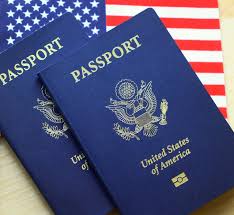The Best Time to Travel to the United States: A Seasonal Guide
The United States is one of the most diverse travel destinations in the world, offering a vast array of landscapes, cultures, climates, and experiences. From the bustling cities of New York, Los Angeles, and Chicago to the natural wonders of the Grand Canyon, Yellowstone, and the Great Smoky Mountains, the U.S. has something for every type of traveler.
With such a wide variety of places to visit, one of the key questions for travelers is: when is the best time to travel to the United States?
There’s no one-size-fits-all answer to this question. The best time to visit largely depends on several factors, including what you want to do, where you’re going, and your tolerance for weather extremes.
In this comprehensive guide, we’ll explore the best times to travel to different regions of the U.S., focusing on weather patterns, major events, and travel tips for every season.
1. Spring (March to May): A Time of Rebirth and Blooms
Spring is one of the most popular times to visit the U.S., particularly in regions that experience colder winters. As the snow melts and temperatures rise, many destinations begin to bloom, creating picturesque settings and a perfect climate for outdoor activities. Here’s why spring might be the best time for your U.S. adventure:
a. Northeast and Mid-Atlantic States
Spring in the Northeast (New York, Boston, Washington, D.C., and Philadelphia) is a beautiful time to visit. By late March, the winter chill begins to subside, and April brings warm, sunny days. Washington, D.C. is particularly famous for its Cherry Blossom Festival, which typically takes place in late March or early April.
The pink blossoms lining the Tidal Basin are a sight to behold, and the city offers an array of events, concerts, and parades to celebrate the season.
New York City also comes alive in the spring. As temperatures warm, tourists and locals alike take advantage of the pleasant weather to stroll through Central Park, visit museums, or take in a Broadway show. The outdoor attractions, such as the High Line and Brooklyn Botanic Garden, are also particularly appealing this time of year.
b. The South
In southern states like Texas, Georgia, and Louisiana, spring is a favorable time to visit before the intense heat of summer sets in. Temperatures are warm but not oppressive, and the landscapes are filled with blooming flowers and lush greenery.
New Orleans’ Mardi Gras festivities typically fall in late February or early March, making it a prime destination for spring travelers. Beyond the famous parades, springtime in New Orleans offers pleasant weather for exploring the French Quarter, attending jazz festivals, or enjoying the city’s vibrant culinary scene.
c. The West Coast
California’s coastal cities, including Los Angeles, San Diego, and San Francisco, have temperate weather year-round, but spring is particularly pleasant. Southern California enjoys sunny, mild days ideal for beach trips or hikes in nearby areas like Malibu or Griffith Park. Northern California, including wine regions like Napa and Sonoma, offers spring travelers the chance to see blossoming vineyards and participate in wine tastings.
Further north, the Pacific Northwest (Seattle, Portland) starts to shake off its rainy winter and offers clearer skies and warmer temperatures, making it an ideal time to explore its national parks and lush landscapes.
2. Summer (June to August): Peak Travel Season
Summer is undoubtedly the most popular time for travel to the U.S., especially for families, students, and international visitors. Schools are out, the weather is hot, and major attractions are in full swing. However, with the increased popularity comes higher prices, larger crowds, and the potential for extreme weather in some areas.
a. Northeast and Mid-Atlantic States
Summers in cities like New York, Washington, D.C., and Boston can be hot and humid, but they’re also packed with festivals, concerts, and outdoor events. New York City is a particularly exciting summer destination, with events like Shakespeare in the Park, the Macy’s 4th of July Fireworks, and the U.S. Open Tennis Championship taking place. Coastal destinations like the Hamptons and Cape Cod also see a surge of visitors looking to escape the city heat and enjoy the beach.
b. The South
The southern U.S. experiences intense heat and humidity during the summer, with temperatures often exceeding 90°F (32°C). However, this region is also home to some of the best beach destinations in the country, including Florida’s Miami Beach, the Florida Keys, and the Gulf Coast’s white sand beaches in Alabama and Mississippi.
Inland cities like Nashville, Memphis, and Austin are hot in the summer, but their music scenes thrive during this time with concerts, festivals, and vibrant nightlife. Keep in mind that hurricane season begins in June and lasts through November, so coastal regions like Florida, Texas, and Louisiana may experience storm activity during this period.
c. The Midwest
Summer is the ideal time to visit the Midwest, as temperatures are warm but generally not as extreme as in the South. Chicago, Detroit, Minneapolis, and Cleveland offer a range of summer festivals, outdoor markets, and lakefront activities. The Great Lakes region is particularly appealing, with boating, fishing, and beach activities drawing visitors to areas like Lake Michigan, Lake Superior, and Lake Erie.
d. The West
Summer is prime time for visiting the national parks of the western U.S., including Yellowstone, Yosemite, and the Grand Canyon. Temperatures can be scorching in the deserts of Nevada, Utah, and Arizona, but higher elevations, like those found in the Rocky Mountains or Sierra Nevada, offer cooler temperatures and beautiful landscapes.
California’s coastal areas remain relatively mild even in the summer, making it a popular destination for travelers looking to escape the heat. San Diego and Los Angeles beaches, as well as northern areas like Monterey and Big Sur, are ideal for summer road trips and coastal getaways.
3. Fall (September to November): A Season of Color and Calm
Fall is one of the most beautiful and underrated times to visit the U.S. The summer crowds have dissipated, the temperatures have cooled, and the landscapes are painted with vibrant autumn colors. Fall is also a time for festivals, harvests, and unique cultural experiences across the country.
a. The Northeast
The northeastern U.S. is world-famous for its fall foliage. States like Vermont, New Hampshire, Maine, and upstate New York draw visitors from around the globe for the chance to see their forests transform into a kaleidoscope of reds, oranges, and yellows. Leaf-peeping tours, apple-picking, and pumpkin patches are popular fall activities in this region.
New York City and Boston also enjoy milder temperatures and fewer crowds in the fall, making it a great time to explore the cities’ cultural offerings, such as art exhibits, theater performances, and food festivals.
b. The South
Fall in the southern U.S. brings relief from the oppressive heat of summer, making it an excellent time to visit cities like Charleston, Savannah, and New Orleans. The weather is warm but not humid, and the region hosts a variety of food festivals, music events, and historical tours during this time. Football season is also in full swing, offering a unique cultural experience for sports fans visiting the South.
c. The West
Fall is a great time to visit the western U.S., particularly its national parks. The summer crowds have thinned out, and the temperatures in places like Yellowstone, Zion, and Bryce Canyon are cooler, making for more comfortable hiking and camping experiences.
California’s wine country also shines in the fall. Harvest season is in full swing, and vineyards come alive with festivals, grape-stomping events, and tastings. The weather in cities like San Francisco and Los Angeles remains pleasant, with clear skies and mild temperatures.
4. Winter (December to February): A Time for Snow and Sunshine
Winter in the U.S. offers a stark contrast between the snowy north and the sunny south. Whether you’re looking to hit the ski slopes or escape to a warm beach, there are plenty of travel options during the winter months.
a. The Northeast and Midwest
Winter in the Northeast and Midwest can be harsh, with cold temperatures, snowstorms, and icy conditions. However, for travelers who enjoy winter sports, this is the best time to visit ski resorts in Vermont, New Hampshire, and upstate New York. Cities like Boston, Chicago, and New York also embrace the winter season with holiday markets, ice skating rinks, and festive decorations.
New York City is a particularly magical destination in December, as the city is transformed into a winter wonderland. The Rockefeller Center Christmas tree, window displays on Fifth Avenue, and the New Year’s Eve celebration in Times Square are major draws for visitors.
b. The South and West
For travelers looking to escape the cold, the southern U.S. offers warm, sunny weather during the winter months. Florida is a prime destination, with Miami, Orlando, and the Florida Keys offering beach weather and a wide range of activities, including theme parks, water sports, and nightlife.
California’s southern coast, including Los Angeles and San Diego, also enjoys mild winters, making it a great time to visit without the summer crowds. Arizona’s desert regions, including Phoenix and Scottsdale, offer pleasant temperatures and outdoor activities like hiking and golfing during the winter.
Conclusion
The best time to travel to the United States largely depends on your interests, preferred weather, and the regions you wish to visit. Each season offers unique experiences, from the blooming flowers of spring and the sunny beaches of summer to the vibrant fall foliage and festive winter celebrations.
For those seeking mild weather and fewer crowds, spring and fall are ideal times to explore the U.S. However, if you’re interested in beach vacations, summer is the best season, while winter offers a mix of snowy getaways in the north and sunny retreats in the south. By carefully considering the seasonal highlights of each region, you can plan the perfect trip to the United States tailored to your preferences.






